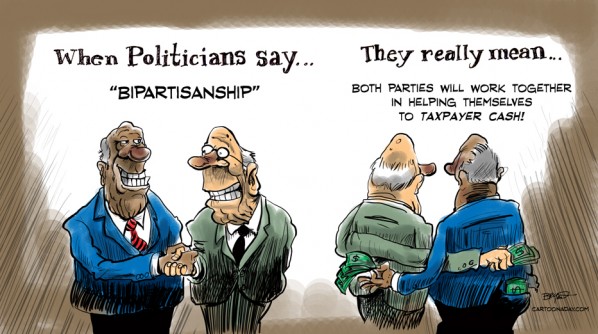I’ve stumbled across a new cool website called Truth in Accounting. It reveals the true level of government debt based on true GAAP accounting methods. It has a detailed analysis of every state in the country. To give you a taste of the truth here is the comparison of the national debt reported by your feckless politician leaders in Washington DC versus the real debt which you, your children and their children are on the hook for:
Reported National Debt – $17.7 trillion
The Truth – $82.1 trillion
Your Share – $259,000
When you examine the pension obligations of our states you realize they will be impossible to honor. If you are a government employee, get prepared for a bleak retirement because you aren’t going to get the pension you were promised. What can’t be paid, won’t be paid.The unfunded liabilities across all levels of government are immense and will never be paid. Only the brain dead and liberals can’t comprehend the facts.
Please bookmark this website and examine the truth.
http://www.truthinaccounting.org/
Hat tip Avalon

IL, CA, TX, PA, MA, NY Dug Deeper Pension Holes in 2013
August 29, 2014: Illinois, California, Texas, Pennsylvania, Massachusetts, and New York have higher pension debt in 2013 than in 2012.
· These states had the largest pension debt increase across the 50 states from 2012 to 2013.
· The “Law of Holes” says if you’re in one, stop digging
· As Labor Day approaches, will these states be able to honor their retirement promises to their workers?
| State |
2012 Pension Debt |
2013 Pension Debt | Increase |
| Illinois |
$94.58B |
$100.5B |
$5.92B |
| California |
$53.44B |
$59.43B |
$5.99B |
| Texas |
$31.64B |
$35.86B |
$4.22B |
| Pennsylvania |
$29.26B |
$34.02B |
$4.76B |
| Massachusetts |
$23.95B |
$30.26B |
$6.31B |
| New York |
$8.75B |
$16.99B |
$8.24B |
Much of this pension debt is hidden from public view, in footnotes to state financial reports or in external actuarial reports. See Hidden Retirement Debt – CA, IL, MA, NY, PA, TX 2009-2013 Check your state by selecting ‘Edit Chart Criteria’ below this chart, select your state on the next page, and scroll down to ‘Generate Chart.’
Truth in Accounting believes states should adopt ‘FACT – Based Budgeting’ (Full Accrual and Calculation Techniques). Each year’s budget would include estimates of year-end debt, as well as current year spending. Citizens could then see whether spending plans increase or decrease their state’s debt. See http://www.statedatalab.org/news/detail/fact-based-budgeting-medicine-for-what-ails-government-finances
Study: Pa.’s debt would cost taxpayers $14,500 each to pay off today
Pennsylvania is famous for its potholes, but it has an even bigger sinkhole problem that could cost taxpayers way more than minor car repairs caused by pock-marked roads.
Truth in Accounting, an economic think tank based in Chicago, released its Fiscal Year 2013 State of the States Report last week. It determined Pennsylvania is a “sinkhole state,” meaning it’s “sinking in debt.”
While the Keystone State owns $38.9 billion in available assets, it owes more than $100 billion, the report says. That makes for $62 billion in obligations, which have been pushed toward the future.
To pay that debt off today, every taxpayer would have to pony up $14,500 — enough to send a Pennsylvania resident to a state university for two years and leave him or her with some beer money, too. It’s the 14th-worst figure in the country.
“One of the reasons Pennsylvania is in this precarious financial position is state officials use antiquated budgeting and accounting rules to report Pennsylvania’s financial condition,” the report says.
Truth In Accounting started by examining the federal fiscal situation but eventually realized states weren’t exactly truthful on their financial statements.
“We were like, ‘Oh, my God, these elected officials are making decisions about the finances of the state and the budget based upon misleading information,” said Sheila Weinberg, founder and CEO of Truth in Accounting.
That led to the State of the State Report, which found that Pennsylvania has $53.8 billion in retirement benefits that have been promised but not funded. Just $3.2 billion of that showed up the state’s balance sheet, according to Truth in Accounting.
More than 50 percent of the state’s bills include promised pension and retiree health-care benefits, according to the report. If the debt isn’t addressed, Pennsylvania might sink even further, the report indicated.
“Unless these pension and retirees’ health care benefits are renegotiated, future taxpayers will be burdened with paying for these benefits without receiving any corresponding government services or benefits” the report found.
Staub can be reached at [email protected]. Follow @PAIndependent on Twitter for more.





